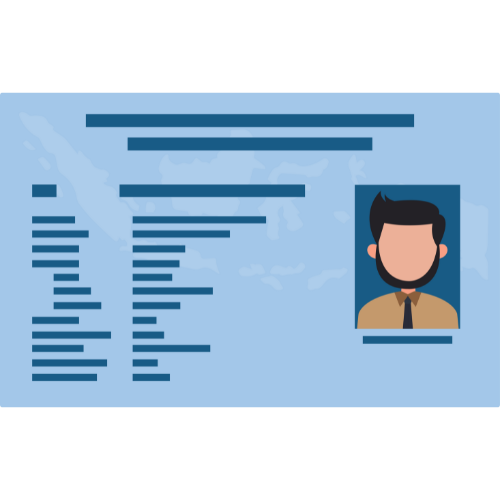Steps to Achieve ISO 14001 Certification: An Environmental Perspective
Learn the steps to achieve ISO 14001 certification from an environmental perspective in our comprehensive guide. Discover how to implement an effective environmental management system and improve your organization's sustainability practices.
Steps to Achieve ISO 14001 Certification: An Environmental Perspective
ISO 14001 certification is an internationally recognized standard that helps organizations establish and maintain an effective environmental management system. Achieving ISO 14001 certification demonstrates to stakeholders that your organization is committed to reducing its environmental impact and improving sustainability practices. In this comprehensive guide, we will explore the steps to achieve ISO 14001 certification from an environmental perspective.
Understanding ISO 14001 Certification
ISO 14001 is a set of environmental management standards developed by the International Organization for Standardization (ISO). The certification process involves implementing an environmental management system that meets the requirements of ISO 14001 and undergoing a formal assessment by a third-party certification body.
By achieving ISO 14001 certification, organizations can demonstrate their commitment to environmental responsibility, compliance with environmental regulations, and continuous improvement in environmental performance.
Steps to Achieve ISO 14001 Certification
1. Commitment from Top Management
One of the critical first steps in achieving ISO 14001 certification is securing commitment from top management. Senior leadership must be actively involved in the implementation of the environmental management system and demonstrate their support for environmental initiatives.
2. Establish an Environmental Policy
The next step is to develop an environmental policy that outlines the organization's commitment to environmental responsibility and compliance with environmental regulations. The environmental policy should be communicated to all employees and stakeholders.
3. Identify Environmental Aspects and Impacts
Organizations must conduct an assessment to identify their environmental aspects (activities, products, and services that interact with the environment) and their associated environmental impacts. This step is crucial for determining the significant environmental aspects that need to be managed and improved.
4. Develop Objectives and Targets
Based on the identified environmental aspects and impacts, organizations should establish environmental objectives and targets to drive environmental performance improvement. These objectives and targets should be measurable, achievable, and aligned with the organization's environmental policy.
5. Implement Environmental Management Programs
Organizations must develop and implement environmental management programs to achieve their environmental objectives and targets. These programs should include operational controls, training, communication, and emergency preparedness and response procedures.
6. Monitor and Measure Performance
Regular monitoring and measurement of environmental performance are essential to track progress towards achieving environmental objectives and targets. Organizations should establish procedures for monitoring key environmental indicators and reporting on performance.
7. Conduct Internal Audits
Internal audits are conducted to assess the effectiveness of the environmental management system and identify areas for improvement. Organizations should schedule regular internal audits to ensure compliance with ISO 14001 requirements and drive continuous improvement.
8. Management Review
Top management should review the organization's environmental management system at regular intervals to assess its continued suitability, adequacy, and effectiveness. Management reviews help identify opportunities for improvement and demonstrate leadership commitment to environmental performance.
Benefits of Achieving ISO 14001 Certification
There are several benefits to achieving ISO 14001 certification from an environmental perspective:
- Enhanced environmental performance
- Compliance with environmental regulations
- Cost savings through improved resource efficiency
- Enhanced reputation and stakeholder trust
- Competitive advantage in the marketplace
- Increased employee engagement and morale
Implementing Sustainable Practices
Implementing ISO 14001 certification is a critical step towards integrating sustainable practices into your organization's operations. By focusing on environmental management and continuous improvement, organizations can reduce their environmental impact, increase operational efficiency, and enhance long-term sustainability.
1. Eco-Friendly Initiatives
Organizations can implement eco-friendly initiatives such as energy conservation, waste reduction, water conservation, and recycling to minimize their environmental footprint. By adopting green practices, organizations can reduce resource consumption, greenhouse gas emissions, and waste generation.
2. Sustainable Business Operations
Sustainable business operations involve considering the environmental, social, and economic impacts of business activities. Organizations can integrate sustainability principles into their decision-making processes, supply chain management, and product development to create value for all stakeholders.
3. Environmental Responsibility
Environmental responsibility requires organizations to take accountability for their environmental impacts and actively work towards minimizing negative effects on the environment. By incorporating environmental considerations into strategic planning and daily operations, organizations can demonstrate their commitment to sustainability.
Achieving ISO 14001 certification from an environmental perspective is a significant milestone for organizations looking to improve their sustainability practices and reduce their environmental impact. By following the steps outlined in this guide and implementing effective environmental management systems, organizations can enhance their environmental performance, meet regulatory requirements, and gain a competitive edge in the marketplace.
Remember, sustainability is not just a trend—it is a global imperative. By embracing eco-friendly practices, implementing sustainable business operations, and taking environmental responsibility, organizations can pave the way for a greener, more sustainable future.
Latest Updates
ca4filings.com Services




























-registration.png)



